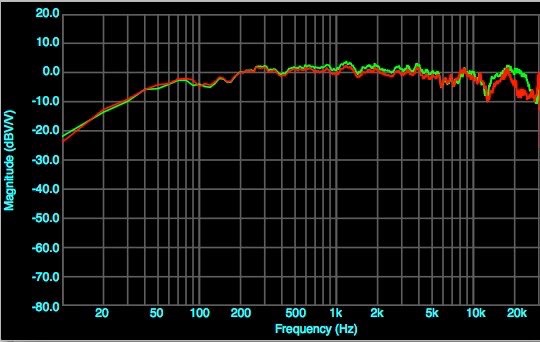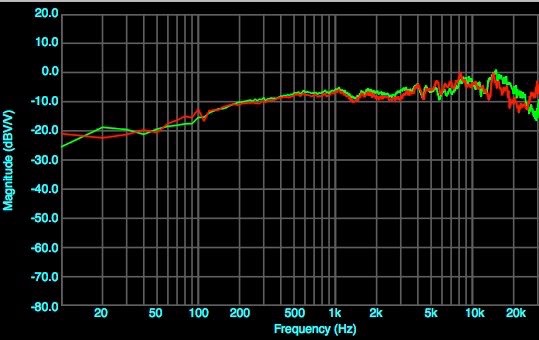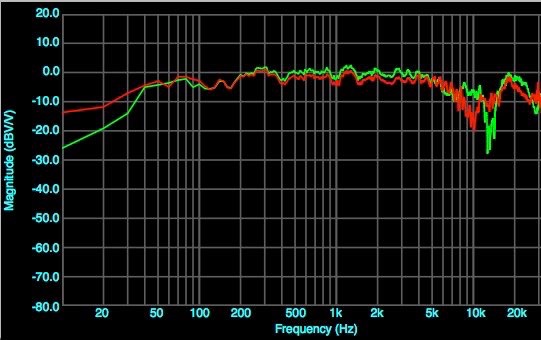Figure 8 Electret?

A Three-Pattern Electret Mic
Friday, July 8, 2016

Mics with multiple patterns usually have externally polarized capsules made of two cardioids back to back. While there’s no reason such a mic couldn’t be made as an electret, such capsules aren’t commonly available for the DIY crowd.
But who says the two cardioids have to be bolted together in one lump? And how do you switch patterns if you can’t change the polarity of the polarizing voltage? Simple. Use a DPDT center-off switch, also called an ON-OFF-ON switch. For cardioid use the front-facing capsule only. For omni use both capsules in phase. For Fig-8 use both capsules out of phase. Note that this wiring only works with electrets, not externally polarized capsules.
So here we stuck two medium size electret capsules and a switch into the headbasket of an E-1000 small lollipop style mic.

Both capsules have to be insulated from the body of the mic. The front capsule would create a ground loop and the rear capsule has to be able to be “reversed”.
I used leftover bits of bare wire to suspend the capsules from the switch terminals on one side and an elastic hair band on the other side.
The mic circuit is the original one with an
added 470Ω resistor and 220 uF/35V filter cap after the voltage regulator transistor, and the output wiring to pins 2 and 3 swapped to make the mic’s phase match the studio standard. Details of modifying these Chinese electrets are found here.




Except for dealing with SMT resistors the size of beach sand, this isn’t all that complicated. It would be great if we didn’t have to use the OEM circuit board, but the space in the handle of these mics is very limited, and it would be hard to fit through-hole parts. It also pretty much eliminates using these E-1000 bodies with non-electret capsules.
On to results, then. Measurements and sound. The unique feature is an electret with a Fig-8 pattern. The frequency response isn’t ideally flat because the capsules aren’t perfectly aligned, but it sounds fine, and sound pickup to the sides is dead, which is one of the main reasons for using Fig-8.



First cardioid. Red mic#1, Green mic#2. Pretty flat and very extended top end. Some LF roll-off.
The notch in response at 12KHz is due to reflection off the back of the headbasket.
Omnidirectional. Red mic#1, Green mic#2. Smooth with extended top end. Some LF roll-off.
Figure 8 pattern. Red mic#1, Green mic#2.
Pretty flat except in the10-12 KHz area where reflections in the headbasket reach the two capsules at different times. Some LF roll-off. Importantly, the side null is very deep. You can aim the side at something you DON’T want to pick up. Maybe the headbasket can be improved.
My guess is these are going to be very good for ballad vocals and acoustic stringed instruments. Maybe drum overheads, but probably too hot for close-miking loud sounds. They are fairly high output mics without any attenuators, and the JFET isn’t biased for high levels. But who knows, they might get crunchy in a useful way for the right song. Time will tell. They sound “real” and “intimate”. Probably not a universal mic, but a nice addition to the arsenal.

Here’s the test sequence.
The hammer dulcimer and mbira are quite close-up. The sax is centered and breathy.
Male and female vocals are intimate.
Synth is thin and over-bright.
If you had meters on the levels, you noticed the white noise was same level as A440, but pink noise was several dB down.
Car that drove past during sax solo wasn’t obtrusive, but A/C can be heard, so cardioid pattern is pretty good (traffic is to mics’ rear).

